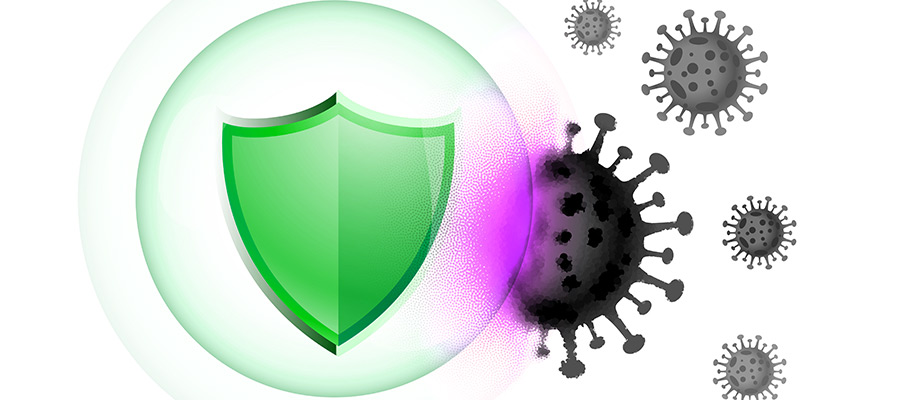
Analytical Detection Test
AEGIS Antimicrobial can best be detected by staining with the water durable reagent, bromophenol blue (BPB).
This technique is very easy to use in the field by direct spray or padding of the BPB solution onto the treated surface.
The standard premixed 0.04% BPB solution can be applied to a light colored surface and allowed to set for 15 to 30 seconds, rinse with water, and observe for the retained blue (not purple) color. Note: The BPB solution will appear purple on all surfaces and rinse easily away from untreated surfaces.
Metal and hard surfaces typically have very thin applications of ÆGIS Antimicrobial and detection using a BPB solution should be made only on a water washed (wiped down, scrubbing may remove the base surface and it’s treatment) and dried surface. Mask the area to be treated and apply the BPB solution. Allow to sit for 30-60 seconds and then wipe with a damp cloth. Remove the masking and look for a color difference between the two areas. The coloring will be very light and use of a bright light is often necessary.
Dark surfaces can’t really be checked this way unless a small area may be removed for testing. If sacrificial material is available, make a weak BPB solution by adding 10 drops of standard 0.04% solution to 2.0 oz of water to obtain a clear light purple solution. Remove a small portion of carpet fiber or other substrate, (approximately 1″ sq), and submerse in the diluted solution, agitate by shaking for one minute, repeat shaking once every 5 minutes for 15 to 30 minutes. Remove the carpet fibers/substrate from the solution and observe the BPB solution for extraction of the color purple from the diluted solution. Properly treated surfaces will extract out all or most of the purple BPB color.
Remember, this test turns items blue so provisions to clean (oxidize) the colored areas need to be made.
Hydrophobic (Water Repellant) Character Test
Surfaces treated with the ÆGIS Antimicrobial will almost always be more water repellant than before treatment. Because of this property, a drop of water and the way that it beads-up can be used to detect treated and untreated areas. Not all surfaces will demonstrate a hydrophobic reaction so pre-testing needs to be done in order to qualify this method as a useful test.
Surrogate Detection Using Scrap Fabric
One of the best ways to check the application efficiency of both operators and procedures is to take strips of sheeting like fabric and place these around the treatment site. After spraying, test the strips with the BPB indicator. Always pretest a sample of the fabric to assure that it was not mill treated with the ÆGIS Microbe Shield program.
Preparing and Using Bromophenol Blue Solution
- To 1 qt. brown glass bottle add 0.1125 g of Bromophenol Blue Sodium Salt, then add 450 g of distilled or Deionized water, mix with stirrer for one hour. Brown Glass helps keep BPB solution from breaking down.
- 450 g (grams) of water equals 450 ml (milliliters) = approx. 15 oz. of water.
- 0.1125 g of BPB-sodium salt is approx 1/16 teaspoon.
- Call if you have trouble wetting out the BPB to the treated surface.
- Apply drop or small squirt of BPB solution to target surface.
- Allow to sit approx 5 minutes.
- Rinse with tap water.
- AEGIS treated surface should be shaded light to dark blue depending on how well the surface was treated
- Hard surfaces may be very faint and will need to be compared to an unstained surface.
- White textile surfaces should be light baby blue to royal blue in color.
- Baby blue – easily visible – acceptable treatment – typical at mills with controlled conditions
- Royal blue – typically indicates a well treated material – typical of applicator treated materials
- Faded Denim – preferred indicator color.
Summary
These methods all have merit depending on what substrates are being tested and what the purpose of the test is. Please contact AEGIS if additional information is required.